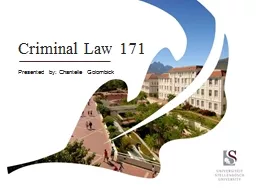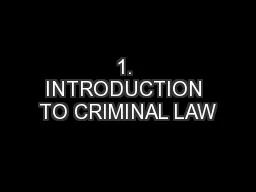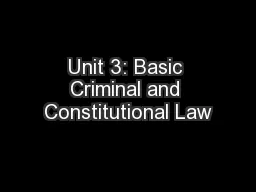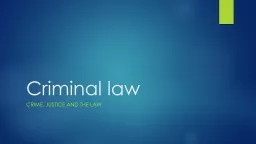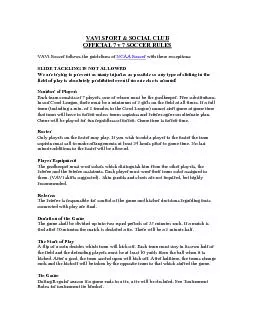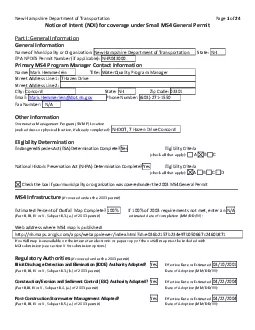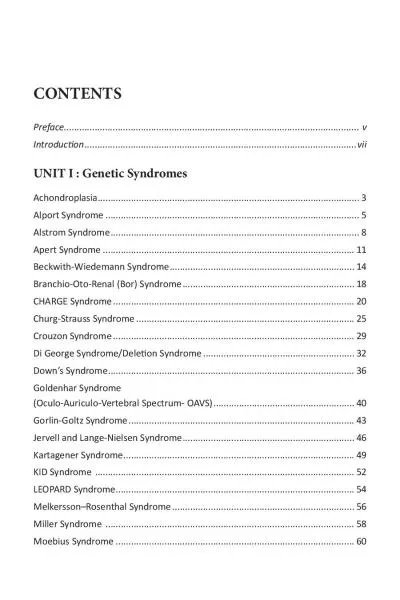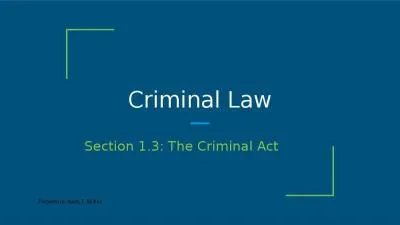PPT-Criminal Law 171
Author : luanne-stotts | Published Date : 2017-05-01
Presented by Chantelle Golombick Technical Presentation Arial 12 15 line spacing Normal margins 254cm 05 indentation No line spaces between headings and paragraphs
Presentation Embed Code
Download Presentation
Download Presentation The PPT/PDF document "Criminal Law 171" is the property of its rightful owner. Permission is granted to download and print the materials on this website for personal, non-commercial use only, and to display it on your personal computer provided you do not modify the materials and that you retain all copyright notices contained in the materials. By downloading content from our website, you accept the terms of this agreement.
Criminal Law 171: Transcript
Download Rules Of Document
"Criminal Law 171"The content belongs to its owner. You may download and print it for personal use, without modification, and keep all copyright notices. By downloading, you agree to these terms.
Related Documents

